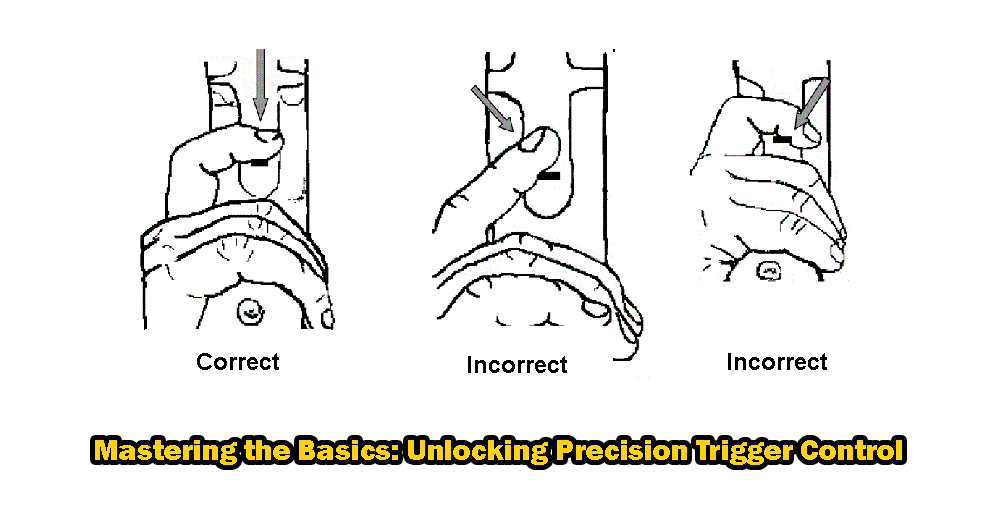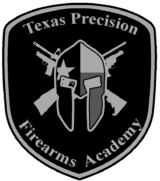
Our “Mastering the Basics” series continues. As always our main objective here at Texas Precision Firearms Academy is to enpower and educate people to be able to defend themselves and their families safely and effectively. In order to effectively do this we must cover a wide variety of topics in our training that are not necessarily covered or touched on in our online Texas License to Carry (LTC) class. In furtherance of this goal we are going to continue our series of blog articles that cover a large variety of basic gun training/skills.
Today’s article is:
“Mastering the Basics: Unlocking Precision Trigger Control”
In the realm of handgun training, achieving pinpoint accuracy is an art that centers around the mastery of trigger control. Understanding how to manipulate the trigger effectively is critical for consistent shot placement, reduced recoil, and improved overall shooting proficiency. In this guide, we’ll explore the importance of trigger control in handgun training, offering insights and practical tips to help you become a more precise and confident shooter.
The Significance of Trigger Control:
Precision Shooting: Trigger control is the key to precision shooting. The way you interact with the trigger directly influences your ability to deliver accurate shots consistently.
Recoil Management: Proper trigger control helps mitigate recoil, allowing for faster target reacquisition and smoother follow-up shots.
Consistency is Key: Consistent trigger control ensures uniform shot placement, whether you’re firing a single shot or engaging in rapid-fire sequences.
Mastering Trigger Control Techniques:
Positioning Your Finger: Place the pad of your index finger on the trigger, ensuring a consistent and stable point of contact. Avoid using the joint or the tip of the finger.
Smooth and Deliberate Press: Practice a smooth and deliberate trigger press. Avoid jerking or slapping the trigger, as this can result in inaccurate shots.
Isolating Movement: Focus on isolating the movement of your trigger finger. Minimize movement in the rest of your hand to maintain a stable shooting platform.
Implementing Trigger Reset:
Understanding Reset: Trigger reset is the process of allowing the trigger to move forward only as much as necessary for the firearm to reset. This aids in faster follow-up shots.
Auditory and Tactile Cues: Pay attention to both auditory and tactile cues to identify when the trigger has reset. This helps you maintain control over your firearm during rapid firing.
Dry Fire Practice for Trigger Control:
Unload Your Firearm: Always ensure your handgun is unloaded and there is no live ammunition in the training area before practicing trigger control.
Visual Focus on Sights: During dry fire sessions, focus on maintaining proper sight alignment and picture while practicing trigger control. This helps in developing muscle memory.
Utilize Snap Caps: Incorporate snap caps or dummy rounds into your dry fire routine to simulate the weight and feel of live ammunition, enhancing the realism of your practice.
Tips for Improving Trigger Control:
Consistent Training: Regular and consistent training sessions dedicated to trigger control will help reinforce muscle memory and improve your shooting technique over time.
Record and Analyze: Use video recording to review your trigger control technique. Identify any inconsistencies and make adjustments accordingly.
Seek Professional Guidance: Enroll in handgun training courses or seek guidance from experienced instructors to receive personalized feedback on your trigger control technique.
Mastering trigger control is a journey that requires dedication and practice. By understanding the principles of proper finger positioning, smooth presses, and trigger reset, you’ll unlock the key to precision shooting. Incorporate dry fire practice, stay consistent in your training, and seek professional guidance to refine your trigger control technique. As you hone this fundamental skill, you’ll find yourself becoming a more confident and accurate handgun shooter.
Now that we have covered some more of the basics that arent really covered in our online Texas LTC class, are you ready to get your Texas license to carry? Our 4 hour online course meets the state of Texas requriements for license to carry and is approved statewide by the Texas Department of Public Safety (DPS). Our class can be taken anywhere at anytime, 24/7 from the comfort of your own homeif you like.
Get Your Texas LTC today!!!!!

